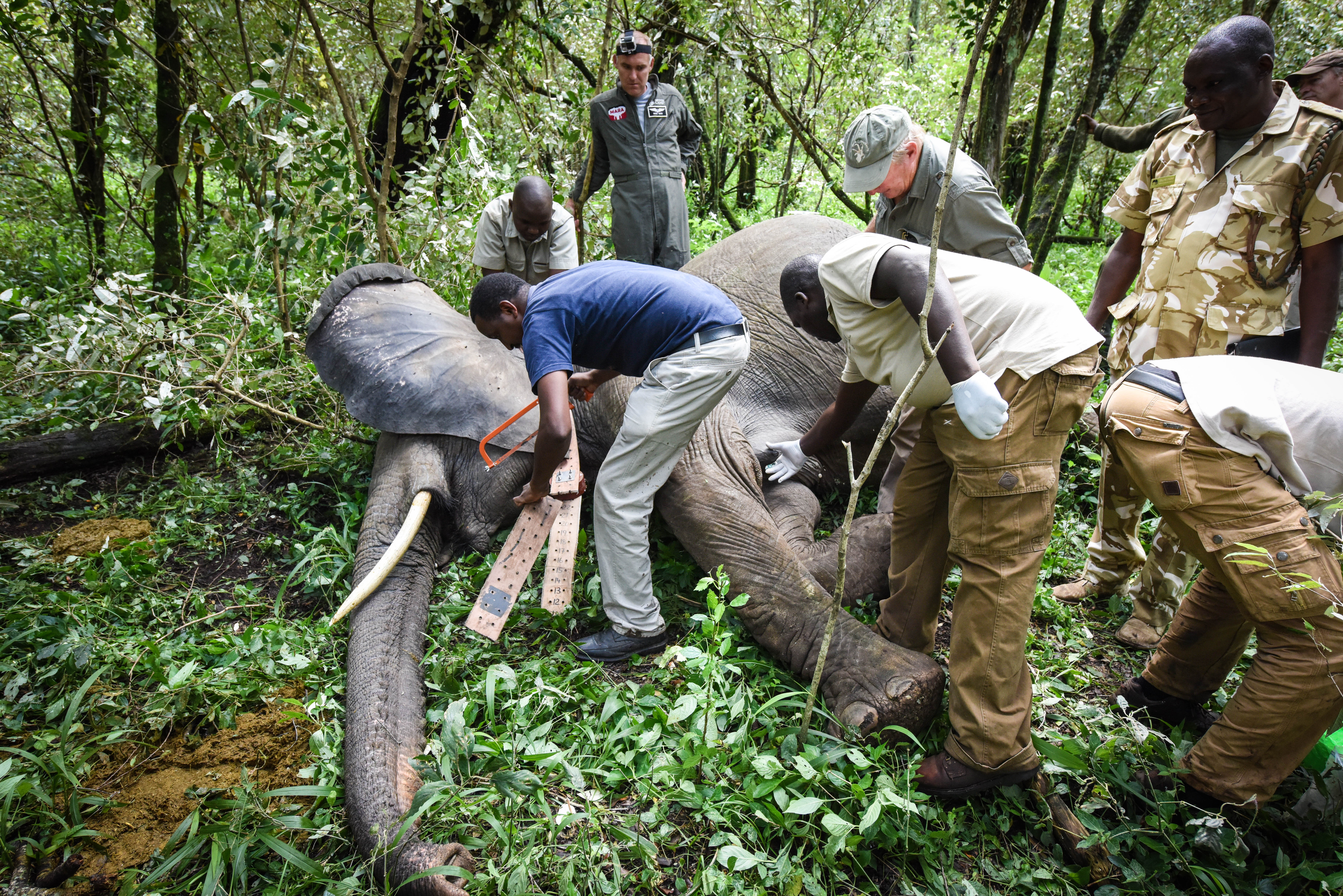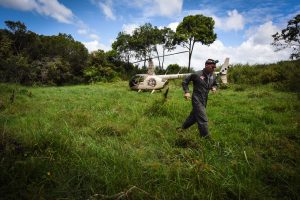The collaring and monitoring of elephants is an essential part of Mara Elephant Project’s mission. These collars provide us with a wealth of information on our elephants like real-time location, roaming habits as well as inactive alerts. This information not only informs our ranger patrol unit locations, but also the land-use planning suggestions we make to the local government.
MEP is currently sanctioned by the Kenya Wildlife Service to install and maintain up to 15 tracking collars at any given time. We hope that eventually this number can grow. We currently have 11 collared elephants that we are monitoring at all times with help from Save The Elephants. The collars last a maximum of 3 years and don’t seem to interfere with the elephant’s quality of life. On average MEP collars two elephants per year and additionally has to maintain the current collars to ensure they are working properly.
Thus was the case with Ivy. She had been collared for a little over 2 years and her collar started reporting irregularly due to low battery power so MEP needed to replace it. Ivy’s an important elephant for several reasons. First, her spatial data indicates that she is a crop raiding elephant living on the fringes of safe elephant rangeland in the Mara. Second, she’s a breeding female who roams with a large herd and currently has two calves with her; making the collaring process more complicated.
 MEP CEO Marc Goss went up in the Karen Blixen Camp helicopter along with KWS vet, Dr. Limo, to push Ivy out of the bush and find a safe spot for her to land when she was darted. After the vet darts Ivy it generally takes 6 minutes for her to be out. The anesthesia is so potent that one prick could be fatal for humans so it’s quite a precarious job for both Marc and the vet.
MEP CEO Marc Goss went up in the Karen Blixen Camp helicopter along with KWS vet, Dr. Limo, to push Ivy out of the bush and find a safe spot for her to land when she was darted. After the vet darts Ivy it generally takes 6 minutes for her to be out. The anesthesia is so potent that one prick could be fatal for humans so it’s quite a precarious job for both Marc and the vet.
The helicopter is essential to the collaring operation. It ensures that the elephant can be herded to a safe place for both themselves and the people involved. It cuts down on time and stress levels for the animal as well. Between the helicopter costs, anesthesia, the vet and the cost of the collar, collaring an elephant is expensive.
 It is $3,000 alone just for the collar and an additional $3,000 to deploy it; however, it takes even more operational costs for the total 3-year life of a collared elephant. On a daily basis collared elephant locations are monitored remotely by Field Administrator Wilson Sairowua, this enables MEP to know when Ivy moves into a conflict area. When that happens MEP deploys the helicopter and/or Rapid Response Unit to intervene and that can cost up to $100,000 a year to run with the capability of monitoring several elephants at a time.
It is $3,000 alone just for the collar and an additional $3,000 to deploy it; however, it takes even more operational costs for the total 3-year life of a collared elephant. On a daily basis collared elephant locations are monitored remotely by Field Administrator Wilson Sairowua, this enables MEP to know when Ivy moves into a conflict area. When that happens MEP deploys the helicopter and/or Rapid Response Unit to intervene and that can cost up to $100,000 a year to run with the capability of monitoring several elephants at a time.
These collars are essential to MEP’s research and protection of the Mara elephants. Please consider supporting a collar for its lifetime.


